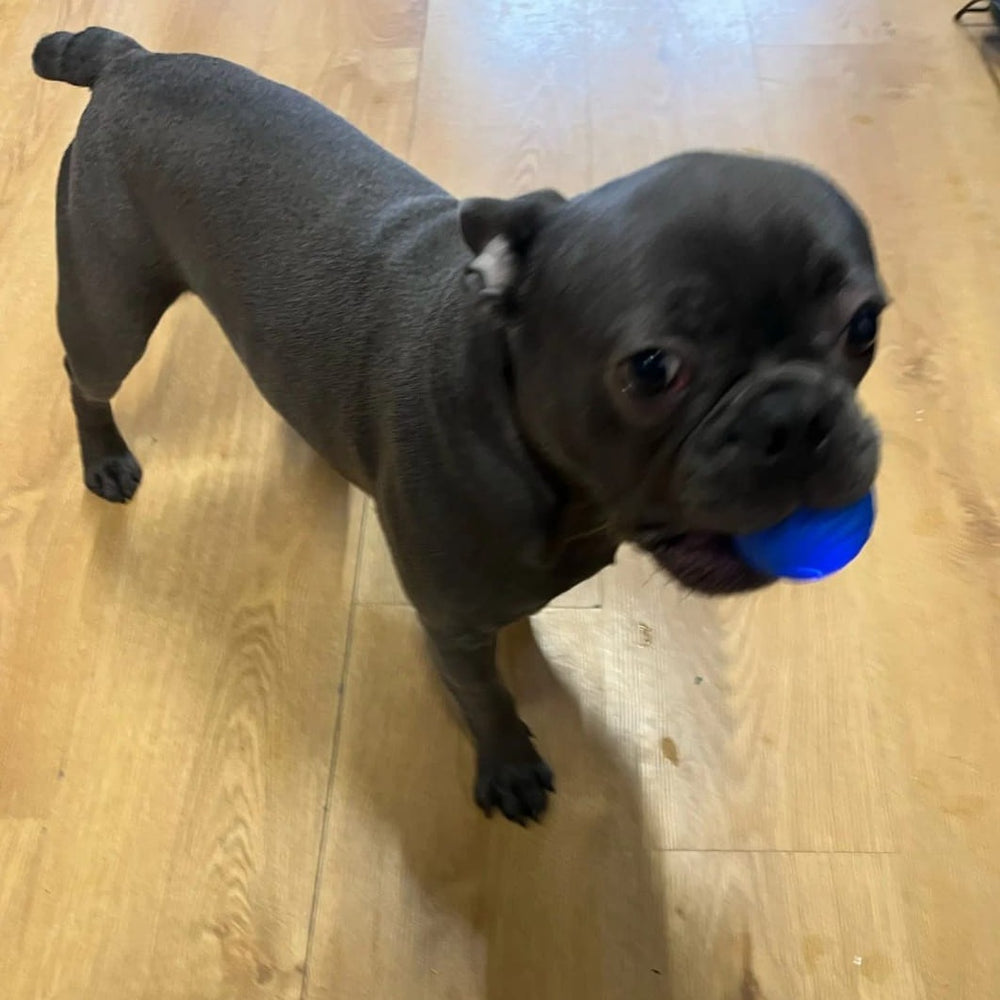Walking your dog should be a pleasant and enjoyable experience for both of you. However, many dog owners struggle with their furry friends pulling on the leash, turning what should be a relaxing stroll into a frustrating tug-of-war. If you find yourself being dragged along by your dog, don't worry—you're not alone, and there are effective strategies to help you regain control. In this guide, we'll explore practical tips and techniques to stop your dog from pulling on the leash, ensuring that your walks become a harmonious experience. For more expert tips on leash training, check out this comprehensive guide from the American Kennel Club (AKC).
Before diving into the solutions, it's essential to understand why dogs pull on the leash in the first place. Dogs are naturally curious and energetic creatures. They pull because they are excited to explore their environment, greet other dogs or people, or chase after squirrels and birds. Additionally, some dogs may pull due to anxiety or lack of proper training.
The Importance of Training
Training your dog to walk nicely on a leash is not only about improving your walks but also about establishing your role as the leader. Consistent and positive training helps build a strong bond between you and your dog, promoting better behavior in various situations.
Tips to Stop Leash Pulling
1. Choose the Right Equipment
The equipment you use can make a significant difference in managing your dog's pulling behavior. Here are some options to consider:
- Flat Collar: A standard collar is suitable for dogs that already have good leash manners. However, it may not be the best option for strong pullers as it can cause discomfort or injury.
- Harness: A harness distributes pressure more evenly across your dog's body, making it a more comfortable option. Look for a front-clip harness, which can help reduce pulling by redirecting your dog's movement.
- Head Halter: A head halter is designed to give you more control over your dog's head, similar to how a horse halter works. It can be effective for strong pullers, but some dogs may need time to adjust to wearing it.
2. Use Positive Reinforcement
Positive reinforcement is a powerful training technique that involves rewarding your dog for good behavior. When your dog walks nicely beside you, reward them with treats, praise, or a favorite toy. This encourages them to repeat the desired behavior. According to the American Kennel Club (AKC), it's crucial never to take good behavior for granted. Dogs repeat behaviors that are rewarding, so ensure you always reinforce good leash manners with rewards.
- Start at Home: Begin leash training in a low-distraction environment like your home or backyard. This allows your dog to focus on learning without being overwhelmed by external stimuli.
- Reward Frequently: In the initial stages, reward your dog frequently for staying by your side. As they improve, you can gradually reduce the frequency of treats.
- Be Consistent: Consistency is key in training. Ensure that all family members follow the same training methods and commands to avoid confusing your dog.
3. Teach the "Heel" Command
The "heel" command instructs your dog to walk closely beside you. Here's how to teach it:
- Start with a Treat: Hold a treat in your hand and let your dog sniff it.
- Give the Command: Say "heel" and start walking. Keep the treat close to your dog's nose to encourage them to stay by your side.
- Reward and Repeat: After a few steps, reward your dog with the treat and praise. Repeat this process, gradually increasing the distance before giving the treat.
4. Use the Stop-and-Go Method
The stop-and-go method helps teach your dog that pulling leads to a halt in movement, while walking nicely allows the walk to continue.
- Stop When They Pull: When your dog starts to pull, stop walking immediately. Stand still and wait until they return to your side or the leash becomes slack.
- Start Again: Once your dog is back in position, start walking again. If they pull again, stop and repeat the process.
- Be Patient: This method requires patience, especially in the beginning. However, with consistency, your dog will learn that pulling is not rewarding.
5. Wait for a Loose Leash
If you stop walking when your dog pulls, wait for a slack leash before you start moving again. The leash should form a J-shape, indicating that your dog is not pulling. It might take some time initially, but eventually, your dog will understand that a loose leash means the walk can continue. The AKC recommends waiting for your dog to turn their attention back to you before resuming the walk.
6. Incorporate Life Rewards on Your Walk
Walks should be enriching experiences for your dog. Incorporate life rewards, such as allowing your dog to sniff a shrub or greet another dog, when they walk without pulling. These rewards help reinforce good behavior and make the training process more enjoyable for your dog.
7. Walk at a Good Pace
Humans often walk too slowly for dogs, which can lead to pulling. Try to walk at a pace that is comfortable for both of you. While training, a quicker pace can make it easier for your dog to learn not to pull.
8. Be Consistent With Your No-Pulling Rule
Consistency is crucial in training. Never allow your dog to pull on the leash, even if you're in a hurry. Inconsistent enforcement of the no-pulling rule can set your training back significantly.
9. Keep Training Sessions Short and Fun
Training sessions should be short and engaging. Puppies and young dogs have limited attention spans, so keep sessions brief and positive. Focus on making progress, not covering a certain distance.
10. Be Interesting and Engaging on Walks
To keep your dog's attention on you, be interesting and engaging. Talk to your dog, take short training breaks, and play games. If you're more interesting than the distractions around you, your dog is more likely to stay focused on you.
Advanced Techniques
For dogs that continue to pull despite basic training, advanced techniques may be necessary.
1. Hire a Professional Trainer
A professional dog trainer can provide personalized guidance and techniques tailored to your dog's specific needs. They can also help identify any underlying issues contributing to the pulling behavior.
2. Use Training Tools
There are various training tools available that can aid in leash training, such as:
- Clicker Training: Clicker training involves using a clicker to mark the exact moment your dog performs the desired behavior, followed by a reward. This method can be highly effective for teaching leash manners.
- Long Line Training: Using a long line allows your dog more freedom to explore while still being under control. This can be helpful for teaching recall and reinforcing loose leash walking in open spaces.
3. Address Underlying Issues
In some cases, pulling on the leash may be a symptom of an underlying issue such as anxiety, fear, or lack of exercise. Addressing these issues can help reduce pulling behavior.
- Exercise and Mental Stimulation: Ensure your dog gets plenty of physical exercise and mental stimulation. A tired dog is less likely to pull on the leash out of excess energy.
- Behavioral Issues: If your dog pulls due to anxiety or fear, consult with a veterinarian or a professional behaviorist to address these concerns.
Conclusion
Stopping your dog from pulling on the leash is achievable with patience, consistency, and the right techniques. By understanding why your dog pulls and implementing positive reinforcement, proper training methods, and appropriate equipment, you can transform your walks into enjoyable experiences for both you and your furry friend. Remember, training is a journey, and with dedication and love, you'll soon have a well-behaved walking companion by your side. Happy walking!
For more detailed tips and expert advice on managing leash issues, check out the AKC's comprehensive guide.















Leave a comment